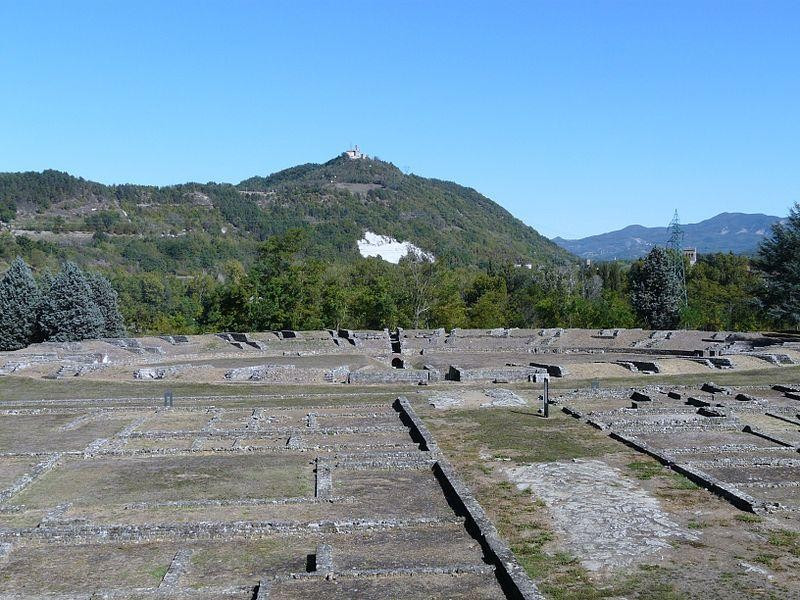Città romana di Libarna
The Roman city, which maintains the pre-Roman name, was founded in the first century BC in a strategic position overlooking the valley, in a territory already frequented from Neolithic (IV-III millennium BC). After the realization of the Via Postumia (148 BC), the center received a big boost and reached its greatest flowering in the Imperial Age (I-II century AD). Thus it became a city characterized by typical forms of Roman monuments: the forensic square, temples, theater and amphitheater, baths and private housing estates. During the late antiquity and the early Middle Ages, Libarna was reduced to village, until the construction of fortified structures of Serravalle and Arquata caused the permanent displacement of the population. The visitable archaeological site is about one tenth of the original city, for most highlighted by the subsequent investigations of the Superintendent. The city was attested on two roads: Via Postumia (key up) and decumannus that intersected it perpendicularly. The blocks are occupied by private houses, built from the end of the first century BC, with rooms arranged around a central courtyard with a portico (peristyle). They have been found in slabs of marble floors and a large mosaic depicting the myth of Lycurgus and Ambrosia. The construction of the amphitheater (second century AD) changed in much of the nature of the block, which saw the opening of shops and an inn. Some of the most significant archaeological finds are now on display at the Museum of Antiquities in Turin.
Info:
From Tuesday to Friday 9:00/12:00 am; Saturday and Sunday from 10:00 am to 4:00 pm, with guided tours.


